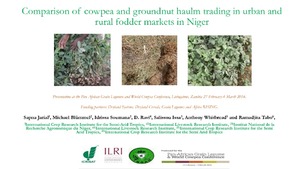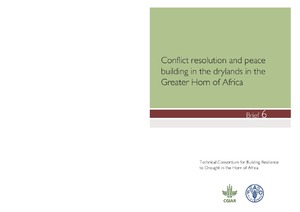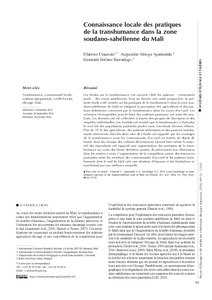Commercializing smallholder value chains for goats in Mozambique: A system dynamics approach
Goat producers in Inhassoro follow traditional management practices that lead to low supply of low quality goats. This has negative impacts on profitability, and on market access. Traders who buy in the Inhassoro locality buy only small volumes, and buyers from external markets are unaware of potential market supply in Inhassoro. This interaction of production constraints and limited information flows in the value chain was addressed using a system dynamics model for various commercialization scenarios.
Common Framework and Integration
Community mobilization, design and partnership arrangements in conservancies
Community participation in decentralized management of natural resources in the southern region of Mali
Decentralized governance of natural resources is considered one of the key strategies for promoting sustainable management of natural resources at local level. Effective decentralized natural resource management requires strong local natural resource institutions. Therefore, strengthening local institutions governing the management of natural resources is one of the core principles of decentralization reforms in Francophone West Africa countries.
Community conservancies and payments for wildlife conservation (PWC) as a coping strategy under different conservancy institutional arrangements
Community conservancies and payments for wildlife conservation (PWC) as a coping strategy under different conservancy institutional models
Conjunctive water management in the Rechna Doab: An overview of resources and issues
Connaissance locale des pratiques de la transhumance dans la zone soudano-sahélienne du Mali
Les études sur la transhumance ont souvent ciblé les pasteurs – notamment peuls – des zones sahéliennes. Pour en donner une autre perspective, la présente étude a été centrée sur les pratiques de la transhumance dans la zone soudano-sahélienne du Mali en intégrant la perception des agriculteurs et des pasteurs sédentaires concernés par la transhumance dans les zones d’accueil. Les scénarios envisageables pour le futur des systèmes pastoraux ont aussi été analysés. Les données ont été collectées à travers des groupes de discussion et des enquêtes individuelles.







